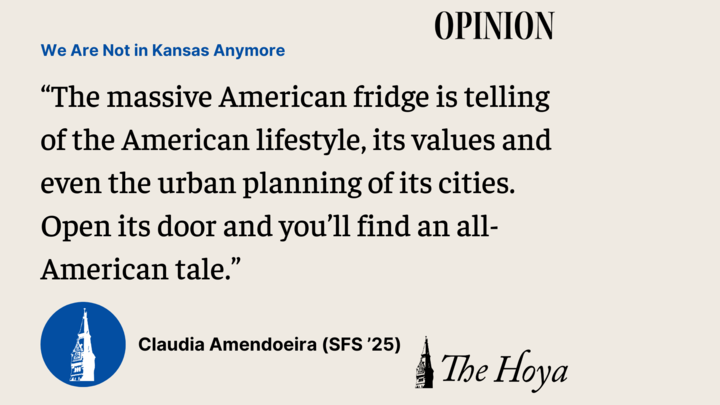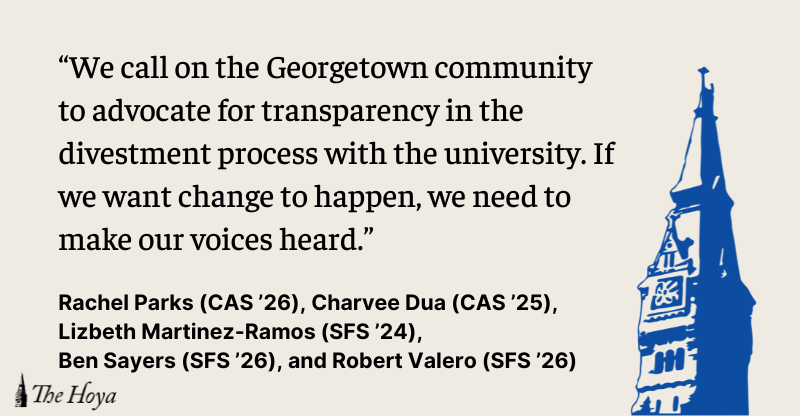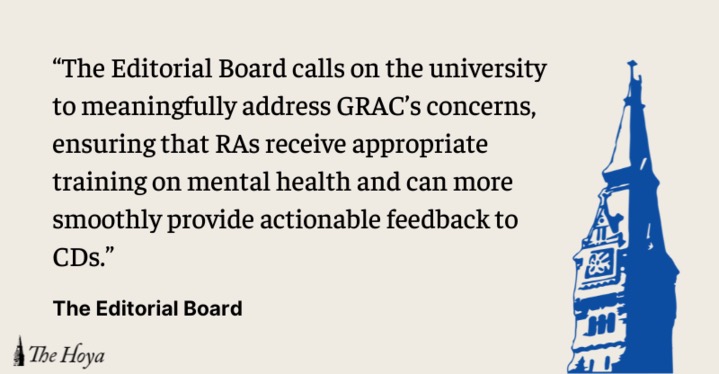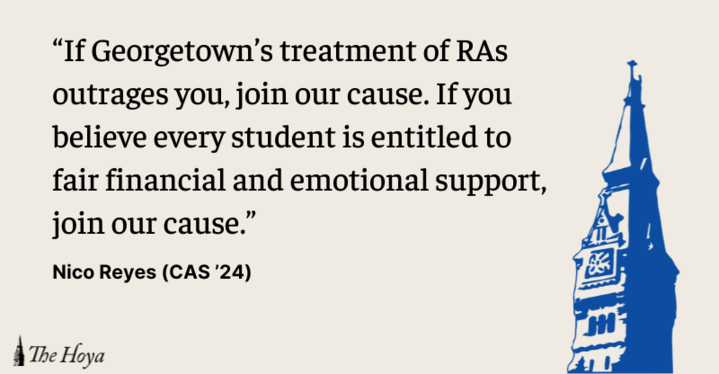You enter the kitchen and there it is, 17 cubic feet that promise to fulfill your biggest dreams. With one yank — which gives you a cramp from stretching your arm too far — happiness greets you.
When people ask me what the biggest difference is between Europe and the United States, an unconventional response comes to mind: refrigerators. While the fridge at my house in Portugal sits on top of a counter, squished and hidden between two other appliances, the fridge in my leased Georgetown townhouse runs the full length between floor and ceiling, designed with shelves and compartments for Marie Kondo-style food optimization. It’s the king of my kitchen.
When I first noticed this difference, I justified this American XL fridge by poking fun at the United States in the way that Americans poke fun at Texas: everything really is bigger over there.
However, after falling into a rabbit hole about the history of kitchen appliances (thank you to The Hoya for the privilege of writing this column), I realized that 64-ounce ketchup bottles and a preference for quantity over quality is not the full story. The massive American fridge is telling of the American lifestyle, its values and even the urban planning of its cities. Open its door and you’ll find an all-American tale.
The most obvious drivers of the XL fridge are two principles: convenience and efficiency. In both metrics, Europe is light-years behind. In the United States, convenience shops are open day and night, groceries are delivered at your doorstep in a matter of hours and the coffee you pre-ordered at Starbucks waits at the counter for you to scoop up on your way to work. The same principle applies to food: go on one big supermarket trip (more commonly known as grocery runs, as I’ve learned) and you’re set for the week.
Plenty of refrigerator space also allows for one big batch of food to be made on Sunday and stretched out for the week’s meals, ensuring that there is no time wasted on a typically high-paced day in the U.S. For most Europeans, however, less is more. There is simply no reason we would want to keep a week’s worth of meat stocked when going to the butcher’s every two days is an excuse to chat with him for hours on end while sitting under the sun drinking another shot of espresso.
But many of my American peers at Georgetown — who usually don’t have to face these problems, thanks to Trader Joe’s right on Wisconsin Avenue — still have greatly different eating habits than I. This makes me wonder whether the American fast-paced lifestyle is a necessity rather than a choice.
Consider the typical layout of American cities and it becomes obvious why the European tendency to pop into the corner market every morning to buy fresh bread is an unrealistic luxury. With the supermarket over 45 minutes away, non-perishables have to be your best friend. This is even more true when we consider the 19 million Americans living in food deserts. For these families, finding time for one grocery run a week is challenging enough, and buying in bulk is undoubtedly the most budget-friendly option.
So, the winner between America’s monster-sized fridges and their humble European counterparts remains unclear. Despite appreciating the XL fridge as much as the next person, I don’t wish to eat last night’s leftovers in front of my computer every day. However, I also understand that Europe’s smaller cities and bigger emphasis on work-life balance for the general population allow for more leisurely shopping that simply cannot be a reality for many Americans. But while we are all undergraduates at Georgetown, probably with more free time and proximity to grocery and convenience shops than we’ll ever have again, maybe incorporating the stereotypical European two-hour lunch break will teach us that nothing is better than sharing a meal with your loved ones.
One thing is for sure: my apples definitely taste better refrigerated.
Claudia Amendoeira is a junior in the School of Foreign Service. This is the second installment of her column “We Are Not in Kansas Anymore: Life in America Through the Eyes of an International Student.”




















